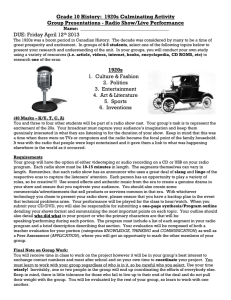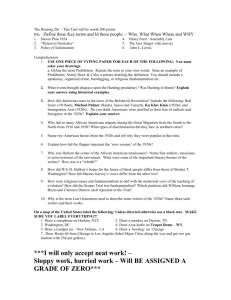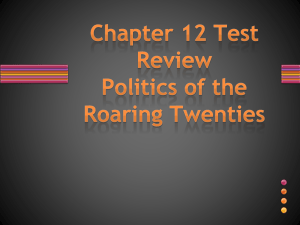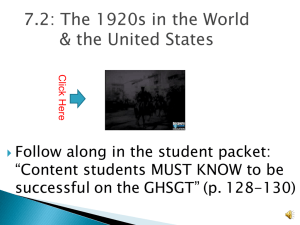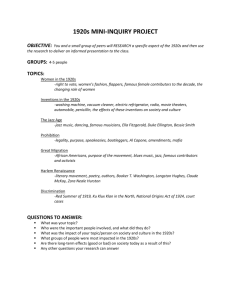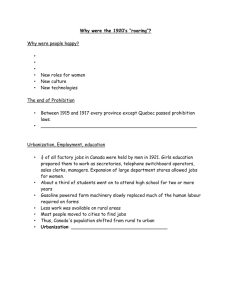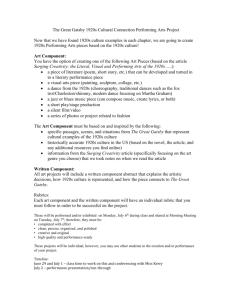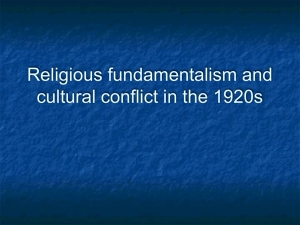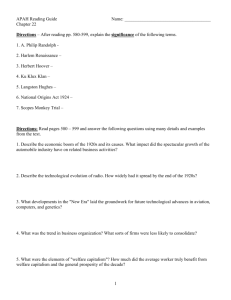To what extent was the 1920s the major turning
advertisement
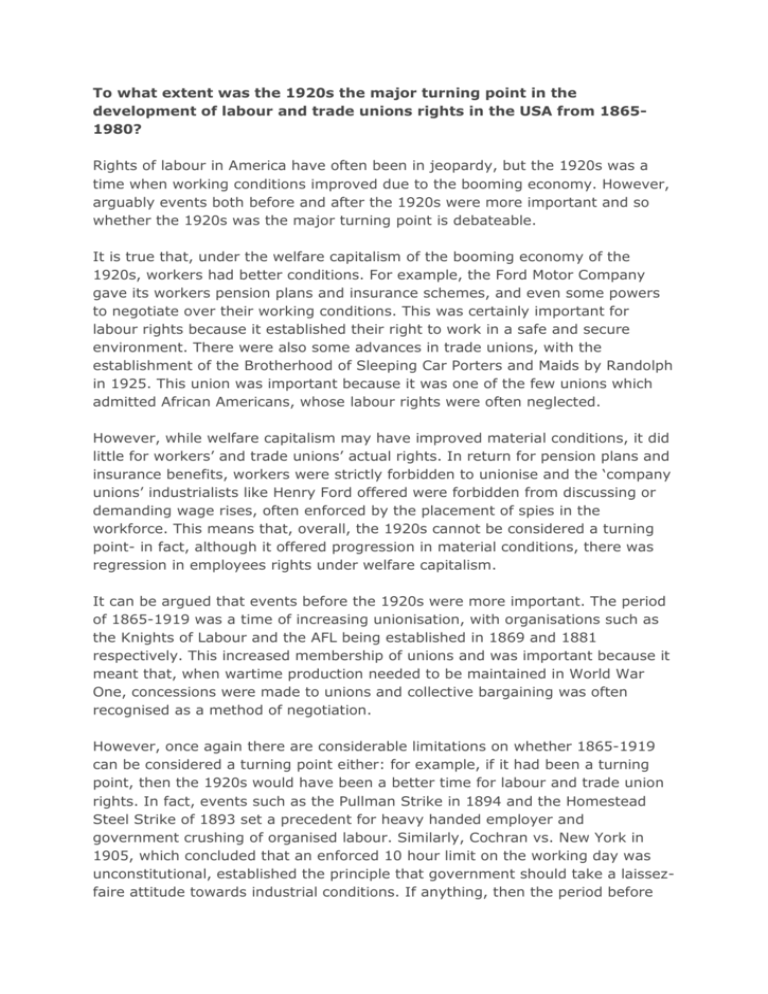
To what extent was the 1920s the major turning point in the development of labour and trade unions rights in the USA from 18651980? Rights of labour in America have often been in jeopardy, but the 1920s was a time when working conditions improved due to the booming economy. However, arguably events both before and after the 1920s were more important and so whether the 1920s was the major turning point is debateable. It is true that, under the welfare capitalism of the booming economy of the 1920s, workers had better conditions. For example, the Ford Motor Company gave its workers pension plans and insurance schemes, and even some powers to negotiate over their working conditions. This was certainly important for labour rights because it established their right to work in a safe and secure environment. There were also some advances in trade unions, with the establishment of the Brotherhood of Sleeping Car Porters and Maids by Randolph in 1925. This union was important because it was one of the few unions which admitted African Americans, whose labour rights were often neglected. However, while welfare capitalism may have improved material conditions, it did little for workers’ and trade unions’ actual rights. In return for pension plans and insurance benefits, workers were strictly forbidden to unionise and the ‘company unions’ industrialists like Henry Ford offered were forbidden from discussing or demanding wage rises, often enforced by the placement of spies in the workforce. This means that, overall, the 1920s cannot be considered a turning point- in fact, although it offered progression in material conditions, there was regression in employees rights under welfare capitalism. It can be argued that events before the 1920s were more important. The period of 1865-1919 was a time of increasing unionisation, with organisations such as the Knights of Labour and the AFL being established in 1869 and 1881 respectively. This increased membership of unions and was important because it meant that, when wartime production needed to be maintained in World War One, concessions were made to unions and collective bargaining was often recognised as a method of negotiation. However, once again there are considerable limitations on whether 1865-1919 can be considered a turning point either: for example, if it had been a turning point, then the 1920s would have been a better time for labour and trade union rights. In fact, events such as the Pullman Strike in 1894 and the Homestead Steel Strike of 1893 set a precedent for heavy handed employer and government crushing of organised labour. Similarly, Cochran vs. New York in 1905, which concluded that an enforced 10 hour limit on the working day was unconstitutional, established the principle that government should take a laissezfaire attitude towards industrial conditions. If anything, then the period before the 1920s was a worse time from labour and union rights than the 1920s were. The period after the 1920s then, in particular the Presidency of Franklin D. Roosevelt and his New deal, is the most likely candidate for the title of major turning point. Acts such as the Wagner Act of 1935, which established the right to collective bargaining and protected workers from blacklisting for union activities, and the Fair Standards of Pay Act in 1938, which set a minimum wage of $25, were extremely significant because they marked a turning point from a laissez-faire and occasionally hostile government, to one which actively encouraged unionisation and protected the rights of workers, especially through the FEPC (established in 1943). The effects of the New Deal and its status as a major event are underlined later acts such as the 1964 Civil Rights Act and Carter’s establishment of a $2.65 minimum wage in 1977, because they show that government attitudes were generally changed. However, as important as the New Deal was, it cannot be ignored that by 1990 just 16.1% of the workforce were unionised. The increasing technological skill required in even basic jobs from 1950-80 meant the traditional union supporters, blue collar workers, were in less demand. Combined with the limiting effects on union rights by the Taft-Hartley Act of 1947 and un-cooperative governments under presidents Eisenhower and Reagan (who sacked most American Air Traffic Controllers after a strike by their union in 1981), union and labour rights have actually undergone regression for much of the time since the 1960s. Therefore, although it was the New Deal and not the 1920s which proved to be the more important turning point, there was no real turning point in trade union and labour rights because it very much depended on the nature of the government (whether conservative or more liberal) as to whether these rights were limited or upheld.

